
Publisher:
Bonnie King
CONTACT:
Newsroom@Salem-news.com
Advertising:
Adsales@Salem-news.com

~Truth~
~Justice~
~Peace~
TJP
Jan-25-2013 17:36

 TweetFollow @OregonNews
TweetFollow @OregonNews
Indian Farmers Trapped and Desperate
Graham Peebles for Salem-News.comLosing the will to live...
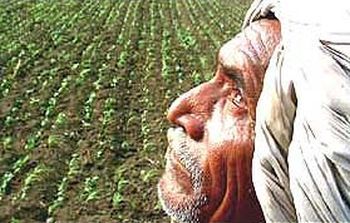 Images from thepeoplesvoice.org, voltairenet.org, MWC News, WN and other sources. |
(LONDON) - India has the largest number of smallholder farmers in the World, 600 million by some estimates. From this army of workers one impoverished desperate man, or indeed woman, with a noose of debt around their neck takes his or her own life on average every thirty minutes, a statistic barely comprehensible, representing the tidal wave of suicides that has swept through the farming community in the last 15 years.
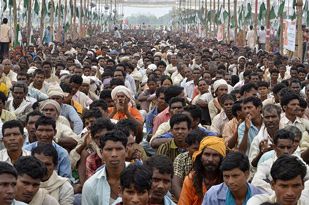 |
The agrarian crisis of which farmer suicides are a tragic consequence is a mega calamity, rooted in one fundamental cause, which P. Sainath1,[1] rural editor for The Hindu describes as ‘the drive towards corporate farming’, predicated by the “predatory commercialization of the countryside”, that is forcing “the biggest displacement in Indian history”. Shocking and destructive it should be seen as part of a greater whole of interconnected issues facing India. Sainath makes this clear, “don’t detach this crisis from the overall political, economic social direction of the country, he says.
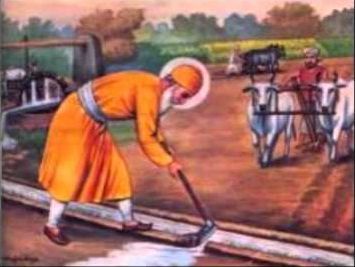 |
The number of farmer suicides - the largest in human history is estimated to have reached 300,000+ and rising as we speak. Add to this the 400 a day who attempt suicide and fail, the 2,200 that daily quit farming and the one and a half million family members affected by suicides, plus the millions facing the very issues that are driving the tragedy, and the scale of the inferno begins to be clear. Shocking, as they are, these figures are an indication only; women are one of eight groups who are generally excluded from official data because most do not have title to land. A woman is not classed as a farmer, she is a farmer’s wife, and her suicide is not included in the figures, nor are The Center For Human Rights and Global Justice at New York University’s (HRGJ)2 report on farmer suicides tells us, “family members of farmers who have committed suicide—who themselves take over farming land, and subsequently commit suicide because of debt”, and less surprisingly the Dalit and Adivasi (indigenous) people are also invisible to a government who ignores them in death as in life.
The major cause of this epidemic is indebtedness to banks and moneylenders, hiding behind the debt however is twenty years of market liberalization at the hands of the government that has withdrawn all agricultural support, failed to invest in irrigation, improve the availability of rural credit, or provide farmers with alternative seed purchasing options – other than GM shopping. HRGJ convey government statistics stating: “that 241,679 farmers in India committed suicide between 1995 and 2009”, the majority are cash crop farmers, growing cotton being particularly hazardous work. Suicides have been highest in the states of Maharashtra, Andhra Pradesh, Karnataka, Chhattisgarh, Madhya Pradesh, Tamil Nadu, and West Bengal, all high cotton producing areas.
Growing disadvantage
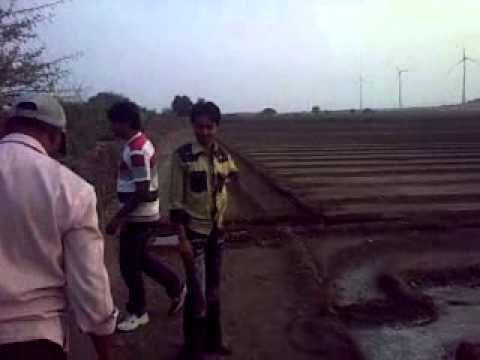
As a result of economic liberalization, designed and sold by the parents of globalization or market fundamentalism; the IMF and the World Bank, India has become integrated into the global market and what Sainath3 calls ‘McEconomics– it tastes the same everywhere’. The state has increasingly withdrawn from the public sector and become “more interventionist on behalf of the corporate world and the super elite.” As state support for farmers was withdrawn India opened up to huge foreign corporations and their equally mega native partners.
The foreign multinationals were at a huge advantage because as HRGJ makes clear, “the price of their products was set artificially low as a result of agricultural subsidies in their home countries,” affecting the costs to Indian (and African) farmers, secondly and equally devastating, “the Indian government’s removal of quotas, duties, and tariffs on imports made it cheaper for these entrants to import their products into the country.” Whilst these policies implemented some twenty years ago have as HRGJ makes clear “helped usher in dramatic economic growth this growth has been unevenly distributed, largely benefiting the nation’s elite, while the majority continues to endure grinding poverty.” Sound familiar; political loyalty in corporate politics lying firmly with the corporations, the duty of politicians in market fundamentalism being continual accelerated growth and maximum profit, no matter the human or environmental cost.
Genetically modified mayhem
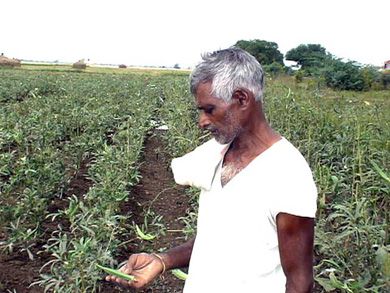 |
With the invasion of multinational corporate man came his agricultural weapon of choice, GM modified cottonseed. The Monsanto Bt seed has flooded the Indian market, to the extent that in some Indian states it is now impossible to buy non-Bt seed, despite the unconvincing evidence to its efficacy. With no choice and convinced by blanket advertising and misleading demonstrations made in ideal conditions, 95% of farmers take loans and invest in GM Bt seeds that, the New York Times (16/10/12)4 report, “can cost three to eight times the cost of conventional seeds”. In addition to authorized distributors a black market has thrived, that as shortages appear, can set “prices as high as 2,000 rupees ($38) per packet, leading to a profusion of bootlegged seeds illegally marketed as genetically modified products..”
Costs of seed, fertilizers and pesticides, all incidentally supplied by the same company, have increased year on year. One farmer relates in the NY Times how “the old pesticide used to cost us 200 rupees per litre…. Now I have to pay between 2,000 to 3,000 rupees. And I need to apply it more and more every year.” With low yields and low market rates as well as the collapse of government investment Indian farmers are increasingly dependent on loans resulting in a debt cycle that is inescapable.
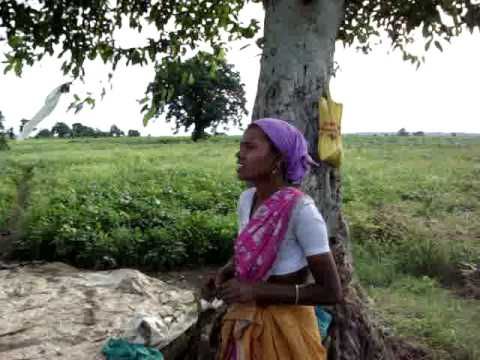
As well as costing the earth the Bt cottonseed demands a great deal more water, a fact that is being hidden from Indian farmers unable to read the English instructions and water warnings on seed packaging - an accidental corporate oversight, no doubt. With poor irrigation, most farmers rely on rainfall to feed crops. When the monsoon rains fail, so does the crop, leaving the farmer with a massive debt to service and the prospect of further loans to continue farming the following year. The lifeblood of the Indian farmer is in danger of becoming even more scarce as the government goes ahead with the privatization of water (as we collectively shake our heads in disbelief) and irrigation pathways, sold no doubt into the hands of Indian corporations. One doubts there are farmer, Dalit or Adivasi cooperatives in the bidding - so much for participatory democracy.
Critics of GM seeds maintain, “the solution to increasing costs and spiralling debt is a shift toward organic and eco-friendly farming methods.” The NY Times reports, “and these are low technology, simple to use, not costly methods – you don’t have the high costs of pesticides or genetically modified seeds.” Monsanto unsurprisingly offer a different answer to this social tragedy: “Buy more BT seed,” they suggest,” with the hope of increasing yields. Unsurprisingly, they dodge any responsibility for farmer suicides, asserting that claims attributing debt to the impact of the thirsty, expensive Bt seed are spurious and “misinformed”. Corporate responsibility beginning and ending at the door marked profit.
A Legacy of debt
A suicidal farmer’s debt does not, alas, die with him: loans merely become the responsibility of the wife (or husband) of the victim, who in many cases repeat the final desperate act, some families have witnessed two or three suicides. Dowries add to the mountain of debt for families in poverty, and widows under the unbearable pressure of huge debt and the burden of finding a husband for their daughters, may in desperation take their own lives.
The cycle of debt has created a spiral of death and extended multiple suffering; Children whose Father or Mother commits suicide are forced to quit school or university and take up the reins of the farm. Sainath describes one young man, symptomatic of many thousands, “I see a child trying to be a man whose eyes tell you how scared he is, pitchforked into a position he is not ready for”. Entrapment the order of the day, keeping people in a position of permanent anxiety, depleted of energy and with no state support, completely at the mercy of market forces and unable to resist. In the 1960s and 70s, when agricultural reforms where tabled in India, Sainath relates there was a peasant revolt, “in the ‘1990s and 2000s there is mass suicide and despair,” outcomes causing less obstruction to the corporate political plan, of the commercialization of everything and everyone, everywhere.
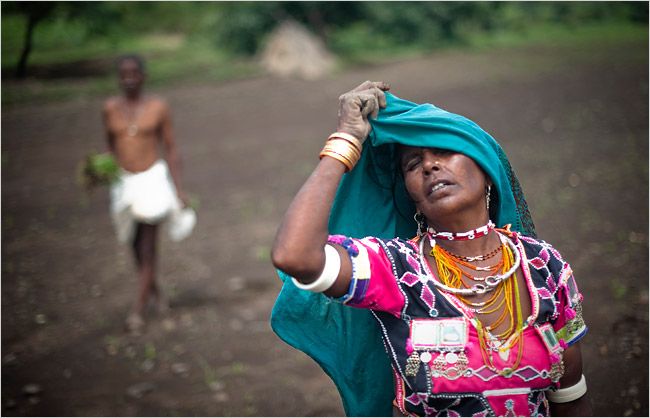 |
In the face of what is suicide on epidemic proportions the Indian government is guilty of appalling neglect, moral and legal - they are signatories to all the key international human rights conventions and are obliged to respect, protect and observe the human rights of farmers and their families. Instead, and in keeping with corporate politics, a plethora of fundamental human rights are being ignored. HRGJ list the rights breached, as: “the right to life; the right to an adequate standard of living; the right to work; the right to food; the right to water; the right to health; and the right to an effective remedy among other rights.” Instead of meeting its responsibilities the government has followed the bureaucratic line of least resistance and set up a series of committees to examine the crisis. It is the Indian way, according to Sainath: “You keep forming committees until somebody gives you the report you want. There have been 13 reports on farmer suicides, for example.” These are pointless distractions from a government that, whilst ignoring the human rights of the most vulnerable members of Indian society, subsidizes the wealthy and procrastinates as farmers in deep despair drink pesticide or rat poison to escape the interminable torture of debt.
The governments actions and inaction have fanned the flames of the crisis, sending a message of indifference loud and clear to farmers and rural communities, and of unity and shared interests to corporations eager to work to ‘commercialize the countryside’ with government backing and poste haste. Farmer suicides are a blood red stain of shame on the democratic pretentions of the Indian government that is duty bound and legally required to act on behalf of the men, women and children being marginalized in rural areas, many who have farmed the land for generations, and are now unable to compete against the machinery of economic fundamentalism that is crushing them totally.
Graham Peebles
London
January 2013
1 http://www.youtube.com/watch?
2 www.chrgj.org/publications/
3 P. Sainath: "Slumdogs vs. Millionaires:
Rural Distress in the Age of Inequality" http://www.youtube.com/watch?v=L1OlgDw5tQ4
4 http://india.blogs.nytimes.
The Create Trust
Unity in Diversity
Graham Peebles is Director of the Create Trust, a UK registered charity supporting fundamental social change and the human rights of individuals in acute need.
Articles for January 24, 2013 | Articles for January 25, 2013 | Articles for January 26, 2013
Quick Links
DINING
Willamette UniversityGoudy Commons Cafe
Dine on the Queen
Willamette Queen Sternwheeler
MUST SEE SALEM
Oregon Capitol ToursCapitol History Gateway
Willamette River Ride
Willamette Queen Sternwheeler
Historic Home Tours:
Deepwood Museum
The Bush House
Gaiety Hollow Garden
AUCTIONS - APPRAISALS
Auction Masters & AppraisalsCONSTRUCTION SERVICES
Roofing and ContractingSheridan, Ore.
ONLINE SHOPPING
Special Occasion DressesAdvertise with Salem-News
Contact:AdSales@Salem-News.com
googlec507860f6901db00.html




Terms of Service | Privacy Policy
All comments and messages are approved by people and self promotional links or unacceptable comments are denied.
[Return to Top]
©2025 Salem-News.com. All opinions expressed in this article are those of the author and do not necessarily reflect those of Salem-News.com.